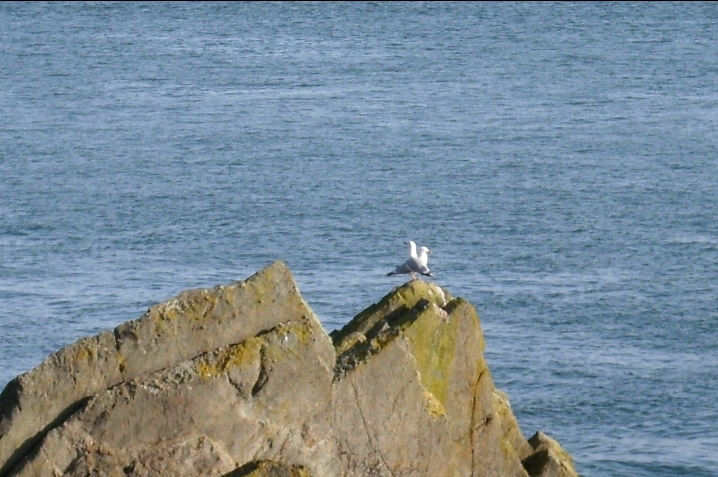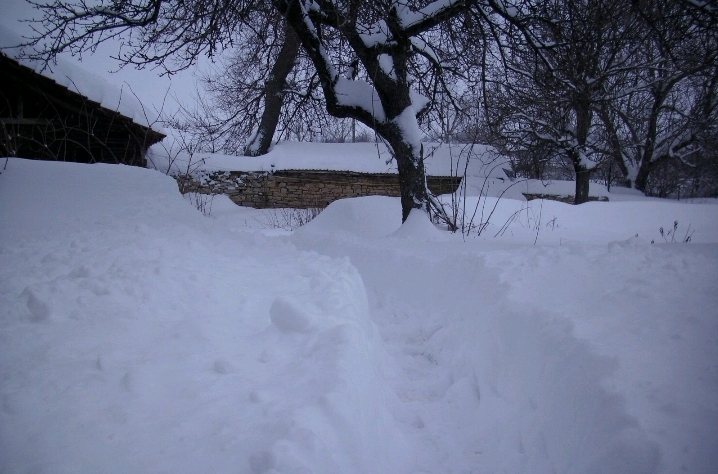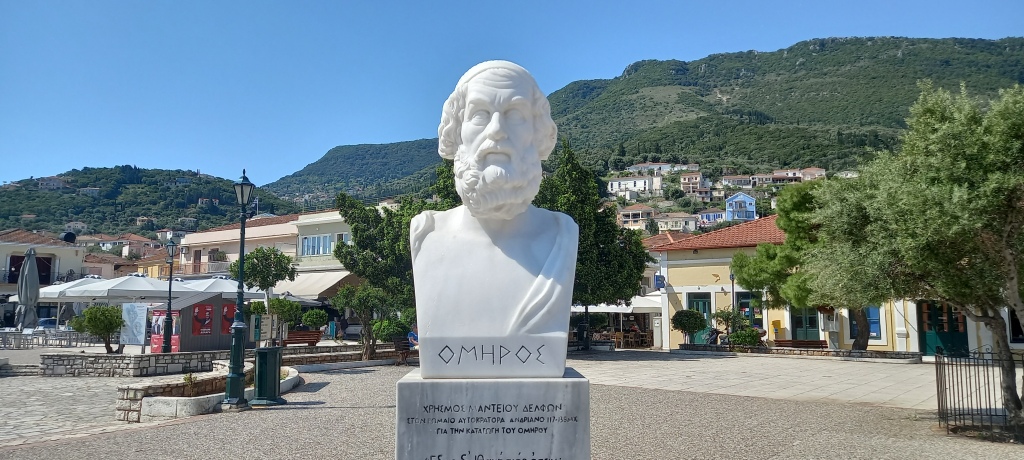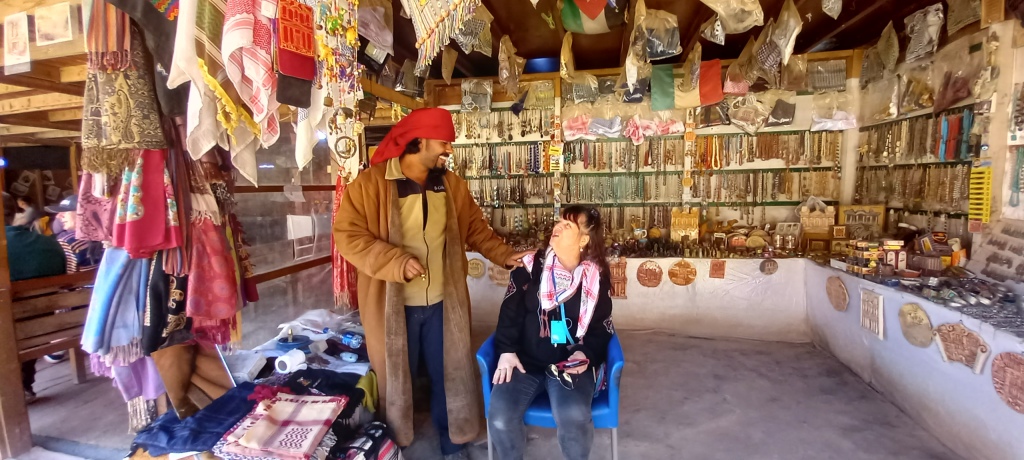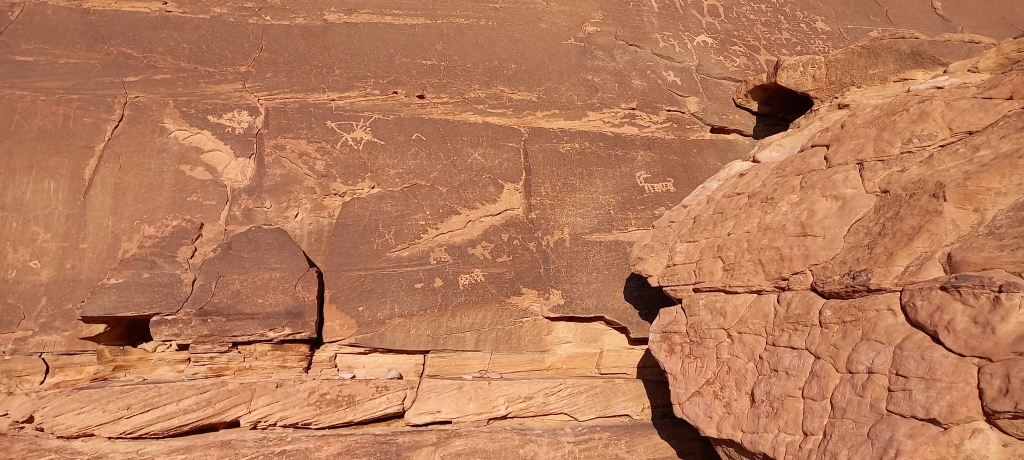Part 97
Part of History Pitt
Historical Performance Talks – Video Greetings – Meet, Greet and Mingles – and Merchandise

Young Snotty, The Far North, and By The Sea
My History, Behind the Scenes History, and Fun History

The My History Part
It was May 2010. We had said goodbye to our cliff top caravan Scottish home and headed North to start off our month of camping.
Our first stop was near Loch Rannoch, near Rannoch Station, a place where we had previously camped. This hidden Highland location is so far from any main roads that it felt very isolated, in a good way. We did the forest walk routes we had done on previous stays, and enjoyed the quiet. After a couple of nights in this isolated spot we headed even further north, this time to a few miles south of Inverness.
We had been about this far a few years earlier but never stayed this far North before. The campsite was run by a very nice couple, and when we arrived ours was the only tent there.

We were staying a few nights, and when others did arrive we told William and Molly to run around outside the tent to put people off setting up camp too near us. We also played Classical music on our radio to put off people who didn’t like that sort of music, and I lit my pipe – which generally I only carried with me to use when posing for photographs – in the hope that the smell would also put people off. It seemed to work.
One of the places we visited was Fort George. Built in the 1700s to control the Highlands after the uprisings there in the first half of the 18th Century, Fort George is more than simply a tourist attraction. Open to the public as it is, Fort George still functions as a British Army base, and soldiers mix with tourists as they walk around the fort.

It was while we were here that we heard of a volcano erupting in Iceland that was having an effect on air transport. As we were flying to Morocco a few weeks later we kept an eye on things while we were travelling around.
Fort George sticks out into the sea. At certain times of year – but not when we were there – dolphins can be seen by tourists looking out to sea from the battlements. These battlements have Georgian artillery pieces placed on them, the same as they would have done when Fort George was first built. I remember thinking how dirty they looked, and that if I was the commander of the fort I would be sending soldiers to the battlements to maintain these historic guns much more regularly than it appeared they were being maintained at the time.

We also visited the city of Inverness a couple of times. The city museum was one highlight. I remember that along with its usual displays charting the history of Inverness it also had a visiting collection that included film props. The most memorable of these were two of the aliens from the 1996 film Mars Attacks!. Penny and William both took the opportunity to pose for photographs with these alien figures from Mars.

Inverness itself is a very nice city with a Georgian appearance. The streets are nice to walk along, and the shops – of which there are plenty – are mostly in very old buildings. It felt a little like Edinburgh, but unlike Edinburgh wasn’t full of tourists, making Inverness much quieter and easy to get around.

We also visited the town of Elgin, which is probably the furthest North we have ever been. This coastal town is not big, but it has interesting buildings, great views, and a good amount of monuments.

It is also the home of Lord Elgin whose ancestor brought back the Elgin Marbles from Greece. The parts of the decorations of the Parthenon on the Acropolis in Athens were acquired by Lord Elgin from the Ottomans who were at that time ruling Greece. They are now in the British Museum in London. Greece claims ownership of these parts of the Parthenon but so too does Britain. It could be argued that they should return to where they came from, but it also could be argued that they were bought and paid for by a British Lord, even if the people who sold them were Ottomans and not Greeks and therefore perhaps it could be said they were selling things that weren’t theirs to sell. Whichever side is right – and perhaps it is partly both sides – the artefacts are still safely on display in the British Museum.

While this far North we took the opportunity to visit a couple of castles. One was Duffus Castle. This castle is distinctive as some of the walls have collapsed in such a way that it looks as though they have been picked up and thrown, now lying where they landed.

We had a few nights at this campsite near Inverness. It was very well equipped. Not only were there showers but also a kitchen that campers could use. We used the kitchen most evenings, mostly just for the toaster which we used to cook crumpets.

It had been quiet on the site, that is, it was quiet until our last night there. Two women and one man put up their tents side by side. They weren’t particularly near us but we could tell they would be noisy.
They were still up late at night. William and Molly went to bed in the tent but Penny and I stayed up. Sitting in the car we watched them. They seemed military to me but not from the Army. They remained loud and didn’t notice us watching them in the dark.
In the early hours of the morning, when they thought everyone else had somehow managed to sleep through the noise they were making, they decided to play a game. This consisted of the man and one of the women crawling around tent to tent trying not to be spotted by the other woman who stayed with their tents.
Penny and I watched quietly. They went around one tent, then another. The last tent was ours. They decided to crawl up to our car before heading around our tent. Just as they got next to Penny’s side of the car I suddenly turned the key in the ignition. The engine roared to life, and the man and woman leaped up and ran back to their tents. They weren’t expecting that, and they weren’t expecting me to turn the car headlights on full, facing directly at their tents, so we could watch them dive inside in a panic.
We went to bed after this, but they recovered from the shock we had given them and continued to make noise all night.
The next morning – after very little sleep – we were up early. We made sure these selfish people woke up too as we loudly walked past their tents. An elderly woman from another tent applauded, and then did the same.

When we checked out we let the owners know what had happened. I enquired which branch of the military the noisy people were from, and said I didn’t think they were from the Army as they weren’t very good at what they were trying to do. It turns out they were from the RAF. The lady owner said we should have woken her and her husband as he would have made them leave during the night. We explained we didn’t want to wake them and that other than this one incident of noisy people we had enjoyed our stay very much. As we drove away we could see the site owner heading to the noisy tents, hopefully to tell them to leave so that the rest of the campers could enjoy the rest of their stay in the very good site.
We had now been camping for about a week. This meant we would now have one night in a hotel. This was so we could charge our phone – phones back then lasted about a week before needing charging – and our portable DVD player, as well as catching up with things on TV. After this one night in a hotel we were heading South, over the border, and into Northern England.
Where we went and what we got up to there I will let you know in the next blog.
The Behind the Scenes Part
Growing up in Cornwall, never that far from the sea, it is probably not surprising that Penny and I love being near the sea, the sound, the smell, and the view are always welcome, even if it’s the British seaside in Winter.
There are a lot of films that are set at the seaside in Britain, and today I will be talking about just one. It was made by Ealing Studios, was released in 1963, was directed by Jeremy Summers, and starred one of my comedy favourites Tony Hancock. It was the second and last film that was to star Tony – the first being the 1961 film The Rebel – and it was called The Punch and Judy Man.

Filmed partly in a studio and partly on location, outside scenes in the fictional town of Piltdown were mostly shot in the seaside resort of Bognor Regis in West Sussex.
Before I continue, perhaps I should explain what a Punch and Judy Man is. Punch and Judy is thought to have begun in 16th Century Italy, but it is in Britain that it really became popular. The people of Britain were desperate for entertainment as soon as they had rid themselves of Puritan rule and restored the Monarchy in the 1600s. The Puritans had banned almost every type of enjoyment from theatre to Christmas and even having a celebration of any sort. Punch and Judy being traditionally- in Britain anyway – a puppet show performed by one man – traditionally called a ‘Professor’ – they were easily set up, performed in tiny tent theatres in front of an audience in the open-air, and could travel from place to place easily. This meant towns and villages who no longer had theatres or places of entertainment could still attend a performance even if it was puppets they were watching rather than human actors. These shows adapted over the years, adding more characters, and became something that people associated with British Seaside holidays.

Tony’s character in the film is happy to be a Punch and Judy Man but his wife – played by the lovely Sylvia Syms – is intent on social-climbing. This is where much of the film’s comedy elements find their way onto the screen.
The film is set sometime when it is still the holiday season as the town still has a good number of tourists visiting the beach. However, it must be turning to Autumn as there are some days of heavy rain – although this isn’t exactly impossible to experience in a British Summer – and the town council are preparing some elaborate ‘Illuminations’ which would normally take place at a seaside town when the evenings start getting darker.

Bognor Regis seems to have been happy to be the film’s backdrop and over 2,000 of its residents appeared in the background of the film. Much of the town has changed since the time of filming but some things remain from that time if you know where to look.
Even the pier is no longer as it appeared in the film. When the pier opened in 1865 it was 1,000 feet long, but some mishaps greatly shortened it in the years that followed the filming of The Punch and Judy Man.

Storm damage in 1964 and again in 1965 destroyed the pavilion at the end of the pier. In 1974 what is described as a ‘series of fires’ destroyed even more of the pier forcing it to be closed. In 2008 another 60 feet was removed due to storm damage. Despite this, Bognor Regis Pier has since reopened, and now seems very stable, and many seaside visitors enjoy taking a stroll along it, but of its original 1,000 feet length only 350 feet now remains.

Tony Hancock’s friend the great John Le Mesurier is also in the film. Many of the outside scenes with Tony and John have the pier as a backdrop. If you compare the view of the pier shown in the film with the view of today then you can really see the difference between how the pier looked in 1963 and how it does now, but it is still worth a visit if you are a fan of piers.

Anyone who has seen the film and visits Bognor Regis in the hope of visiting the pub The Trident where some of the funniest scenes in the film take place may be surprised to find out that these scenes were all shot on a set at Elstree Studios.

However, if you venture a couple of streets away from the seafront there is a pub called The Punch and Judy, which may be the nearest you can get to a pub with any link to the film, even if the link is only in its name.

Many of the seafront buildings in the film have either been pulled down and replaced, had large alterations, or are in danger of falling down. However, if you look hard enough there are still some buildings connected to The Punch and Judy Man to be found in the town.
One of those buildings – which looks little changed from how it probably appeared in the 1960s – is the Royal Norfolk Hotel. This is where Tony Hancock stayed while filming, and it even has a blue plaque to prove it. It still looks well-kept, and appears to be one of the more upmarket hotels in the small seaside town.

Bognor Regis is a very nice town to visit, particularly if you like the British Seaside. We visited in December 2023, and although this is extremely out of season we still enjoyed walking along the seafront, going on the beach to touch the sea, walking on the pier, and exploring the town.

If you haven’t seen The Punch and Judy Man then I do recommend it if you are a fan of Tony Hancock, British comedy, and British seaside towns. I would also recommend Hancock’s other starring role film The Rebel which is probably funnier but doesn’t have the benefit of being set in a British Seaside resort.
In the next Behind the Scenes Part I will be talking about a 1970 album that turned into a stage musical, was then turned into a film musical and is now a stage musical again. What this is, the differences between them, and which I think works best I will let you know in the next blog.
The History Part
Those of you familiar with Blackadder 3 will know of the extravagant things that someone like Prince George would demand. These things had to come from somewhere, and one store in London which is still a Royal favourite has been serving Royalty since a long time before even Prince George’s father came to the throne. That store is Fortnum and Mason in Piccadilly.

William Fortnum was a footman to Queen Anne. The Queen would insist on new candles being lit every night which meant a lot of half-used candles were left over. Fortnum sold these half-used candles as well as a small range of groceries. He then went into business with his landlord Hugh Mason in 1707 and opened a small shop in St James, the first Fortnum and Mason store.
In 1761, William’s grandson Charles Mason went into service for Queen Charlotte, Prince George’s mother. This once again gave the Mason’s a Royal connection, making their business an even more desirable place to shop.

The business quickly expanded, and during the Napoleonic Wars it was Fortnum and Mason that sent dried fruits, spices, and preserves to British officers. In the Victorian Era it was Fortnum and Mason that provided the Queen with the goods she sent to her soldiers fighting abroad, and it is said that in 1886 they were the first store in Britain to stock tins of beans.
The shop expanded as the business grew, and in 1926 the store premises were rebuilt. This resulted in the fantastic Georgian style building we see today. The original address was 181 Piccadilly but since then has been 181 to 184 Piccadilly and also stretches around the corner to include parts of Duke Street and Jermyn Street.

Since the 1960s a huge clock has adorned the store’s main entrance. Although from the 1960s it has – like the rest of the store – a Georgian appearance. Every hour, to the sound of Georgian style music, a four feet high William Mason and a four feet high Hugh Fortnum emerge from the clock to bow at each other as the clock chimes the time.

The store has been a favourite of many Royals including the late Queen Elizabeth II and the present King Charles. The high standards of the store are evident both inside and out. There is probably no better time to experience Fortnum and Mason than during the Christmas period. This we recently did.

Firstly, before even setting foot in the store – the outside of which at Christmas resembles a giant Advent Calendar – you should take time to appreciate each window display. These are wonderful and reflect Christmases past when many of the great London stores used to bring a touch of Christmas magic to their displays. Sadly, many have decided to be ‘Artsy’ rather than Christmassy, and now Fortnum and Mason is unrivalled when it comes to Christmas window displays.

Once inside, the magic continues. This is most evident in the Christmas department. It was here that we couldn’t resist making a small purchase. We chose to buy a small tin of Christmas Orange and Chocolate Biscuits. As I’m sure you can imagine, Fortnum and Mason is not the cheapest place to do your shopping – which is why it was only a small purchase – but the store is worth going in to look around – especially at Christmas – even if you don’t buy anything, although I did enjoy walking down Piccadilly holding my small Fortnum and Mason bag which we have kept along with the tin which contained the biscuits.

So, next time you watch Blackadder 3 and see Prince George talking about how much he is spending on things, those things might well have come from Fortnum and Mason, the store on Piccadilly that first opened in 1707 and has been a favourite of Royals since the very beginning of the Georgian Era.

If you haven’t done so already, give the fantastic King of Blackadder on Twitter a follow!
https://twitter.com/pitchblacksteed?s=09
Then take a look at this also fantastic Blackadder fan group! https://www.facebook.com/groups/1507847676134507/?ref=share
For more on Loch Rannoch https://en.m.wikipedia.org/wiki/Loch_Rannoch
For more on Inverness https://en.m.wikipedia.org/wiki/Inverness
For more on Fort George https://en.m.wikipedia.org/wiki/Fort_George,_Highland
For more on the 1996 film Mars Attacks! https://en.m.wikipedia.org/wiki/Mars_Attacks!
For more on Elgin https://en.m.wikipedia.org/wiki/Elgin,_Moray
For more on Duffus Castle https://en.m.wikipedia.org/wiki/Duffus_Castle
For more on the 1963 film The Punch and Judy Man https://en.m.wikipedia.org/wiki/The_Punch_and_Judy_Man
For more on director Jeremy Sumners https://en.m.wikipedia.org/wiki/Jeremy_Summers
For more on the 1961 film The Rebel https://en.m.wikipedia.org/wiki/The_Rebel_(1961_film)
For more on Tony Hancock https://en.m.wikipedia.org/wiki/Tony_Hancock
For more on Sylvia Syms https://en.m.wikipedia.org/wiki/Sylvia_Syms
For more on John Le Mesurier https://en.m.wikipedia.org/wiki/John_Le_Mesurier
For more on Bognor Regis https://en.m.wikipedia.org/wiki/Bognor_Regis
For more on Bognor Regis Pier https://en.m.wikipedia.org/wiki/Bognor_Regis_Pier
For more on Fortnum and Mason https://en.m.wikipedia.org/wiki/Fortnum_%26_Mason







